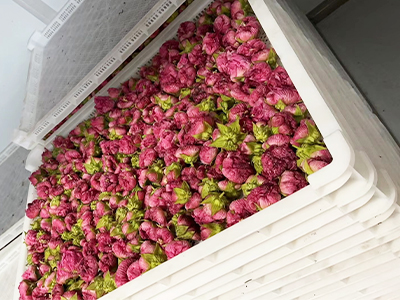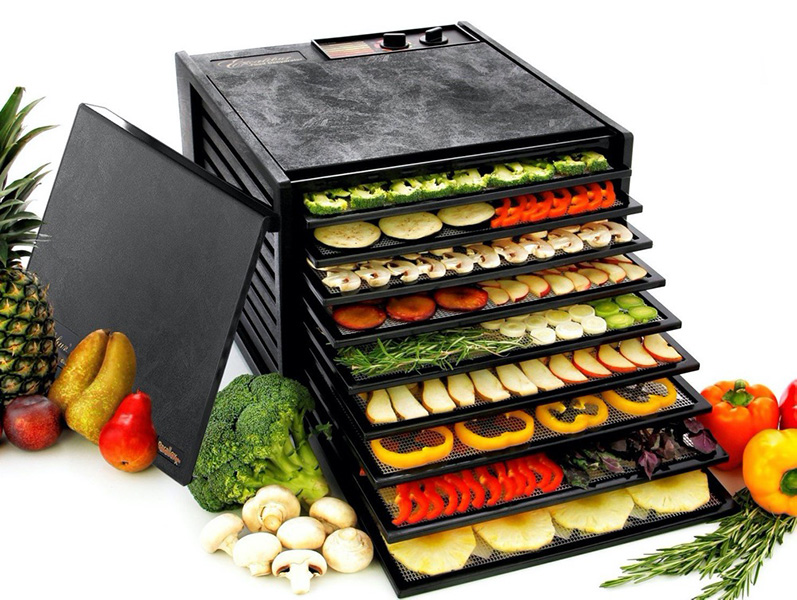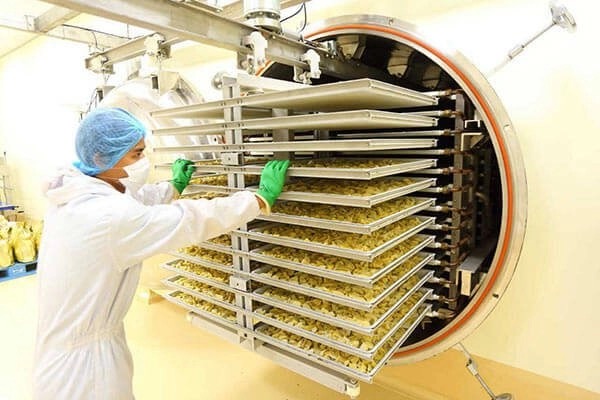
Content Menu
● Introduction
● Understanding Freeze Drying
>> What is Freeze Drying?
>> The Science Behind Freeze Drying
● DIY Freeze Drying Methods
>> 1. The Dry Ice Method
>> 2. The Freezer and Vacuum Chamber Method
>> 3. The Salt and Ice Method
● Alternative Food Preservation Methods
>> 1. Air Drying
>> 2. Sun Drying
>> 3. Oven Drying
● Low-Cost Freeze Drying Options
>> 1. Rental Services
>> 2. Community Co-ops
>> 3. DIY Freeze Dryer Kits
● Freeze Drying Without Electricity
>> 1. Solar Dehydration
>> 2. Cold Frame Drying
>> 3. Smoke Drying
● Long-Term Food Storage Solutions
>> Storage Containers
>> Storage Conditions
>> Rotation System
● Homemade Freeze Dried Snacks
>> Fruit Chips
>> Vegetable Crisps
>> Dried Herbs and Spices
● Conclusion
● Frequently Asked Questions
>> 1. How does the nutritional value of home-dried food compare to commercially freeze dried food?
>> 2. What foods are best suited for DIY freeze drying or alternative drying methods?
>> 3. How long can home-dried or DIY freeze dried foods be stored?
>> 4. Are there any safety concerns with DIY food drying methods?
>> 5. Can I rehydrate home-dried foods in the same way as commercially freeze dried foods?
Introduction
Freeze drying has become an increasingly popular method of food preservation, offering long shelf life and maintaining nutritional value. While commercial freeze dryers are effective, they can be expensive and not accessible to everyone. This leads many to wonder: can you freeze dry food without a machine? In this comprehensive guide, we'll explore various DIY freeze drying methods, alternative food preservation techniques, and low-cost options for those looking to preserve food at home.
Understanding Freeze Drying
What is Freeze Drying?
Freeze drying, also known as lyophilization, is a dehydration process that involves freezing the food and then removing the ice by sublimation. This process preserves the structure of the food while removing nearly all moisture, resulting in a product that can be stored for long periods without refrigeration.
The Science Behind Freeze Drying
The freeze drying process typically involves three stages:
1. Freezing: The food is rapidly frozen to preserve its structure.
2. Primary drying: The surrounding pressure is lowered, and heat is added to allow the ice to sublimate directly into vapor.
3. Secondary drying: Any remaining bound water is removed, leaving the food with minimal moisture content.
DIY Freeze Drying Methods
While it's challenging to achieve the same results as a commercial freeze dryer, there are several DIY methods that can approximate the freeze drying process at home.
1. The Dry Ice Method
This method uses the extremely low temperature of dry ice to freeze food rapidly. Steps:
1. Place food in a sealed container with holes for ventilation.
2. Surround the container with dry ice in a larger, insulated container.
3. Allow the dry ice to sublimate completely (1-3 days).
4. Once the dry ice is gone, the food should be freeze dried.
Caution: Always handle dry ice with protective gear and in a well-ventilated area.
2. The Freezer and Vacuum Chamber Method
This method attempts to mimic the commercial freeze drying process using household equipment. Steps:
1. Freeze the food in your home freezer.
2. Place the frozen food in a vacuum chamber.
3. Run the vacuum to remove air and moisture.
4. Repeat the process several times until the food is fully dried.
Note: This method requires specialized equipment and may not be as effective as commercial freeze drying.
3. The Salt and Ice Method
This traditional method uses the endothermic reaction between salt and ice to create a freezing environment. Steps:
1. Place food in a sealed container.
2. Surround the container with a mixture of ice and salt in a larger container.
3. As the ice melts, replenish it, maintaining the low temperature for several days.
4. Once the food is frozen and dehydrated, remove and store it.
Alternative Food Preservation Methods
While these methods don't technically freeze dry food, they offer alternative ways to preserve food for long-term storage.
1. Air Drying
Air drying is one of the oldest food preservation methods and works well for herbs, some fruits, and certain vegetables. Steps:
1. Clean and prepare the food.
2. Arrange food on drying racks or hang in bundles.
3. Place in a warm, dry area with good air circulation.
4. Allow to dry for several days to weeks, depending on the food.
2. Sun Drying
Sun drying is effective for fruits and some vegetables in hot, dry climates. Steps:
1. Prepare food by washing and slicing if necessary.
2. Arrange on drying racks or screens.
3. Place in direct sunlight during the day, bringing indoors at night.
4. Continue for several days until food is fully dried.
3. Oven Drying
Oven drying can be used for various foods and provides more control over temperature. Steps:
1. Prepare food as for other drying methods.
2. Arrange on oven-safe racks or trays.
3. Set oven to lowest temperature (usually around 170°F/75°C).
4. Leave oven door slightly open for air circulation.
5. Dry for several hours, checking regularly.

Low-Cost Freeze Drying Options
For those interested in freeze drying but unable to invest in a commercial machine, there are some lower-cost alternatives to consider.
1. Rental Services
Some areas offer freeze dryer rental services, allowing you to use a commercial-grade machine for a fraction of the purchase cost.
2. Community Co-ops
Consider forming or joining a community co-op to share the cost of a freeze dryer among multiple households.
3. DIY Freeze Dryer Kits
While not as effective as commercial units, some companies offer DIY freeze dryer kits that can be assembled at home for a lower cost.
Freeze Drying Without Electricity
In situations where electricity is not available, traditional food preservation methods become crucial.
1. Solar Dehydration
Solar dehydrators use the sun's energy to dry food, often with the help of a solar-powered fan for air circulation.
2. Cold Frame Drying
A cold frame (a simple greenhouse-like structure) can be used to dry foods in cooler climates, trapping heat from the sun.
3. Smoke Drying
Smoke drying combines the preservative effects of smoke with dehydration and works well for meats and some vegetables. 
Long-Term Food Storage Solutions
Once food has been dried or freeze dried, proper storage is crucial for maintaining its quality and extending shelf life.
Storage Containers
Use airtight containers, vacuum-sealed bags, or Mylar bags with oxygen absorbers to protect dried foods from moisture and air.
Storage Conditions
Store dried foods in a cool, dark place to maximize shelf life. Avoid areas with temperature fluctuations or high humidity.
Rotation System
Implement a first-in, first-out rotation system to ensure you use older items before they expire.
Homemade Freeze Dried Snacks
While true freeze drying at home can be challenging, you can create similar snacks using alternative drying methods.
Fruit Chips
Thinly slice fruits like apples, bananas, or strawberries and dry them in a low-temperature oven or dehydrator until crisp.
Vegetable Crisps
Create healthy vegetable crisps by thinly slicing vegetables like kale, sweet potatoes, or beets and drying them until crispy.
Dried Herbs and Spices
Dry your own herbs and spices for long-term storage and enhanced flavor in cooking.
Conclusion
While it's challenging to truly freeze dry food without a machine, there are numerous DIY methods and alternative food preservation techniques that can help you extend the shelf life of your food. From traditional air drying to more innovative methods using dry ice, these approaches offer cost-effective solutions for home food preservation. By combining these methods with proper storage techniques, you can create a robust long-term food storage system without the need for expensive equipment.

Frequently Asked Questions
1. How does the nutritional value of home-dried food compare to commercially freeze dried food?
Answer: Home-dried food generally retains most of its nutritional value, but may lose some heat-sensitive vitamins during the drying process. Commercially freeze dried food often retains slightly more nutrients due to the low-temperature process. However, both methods preserve a significant portion of the food's original nutritional content, especially when compared to other preservation methods like canning.
2. What foods are best suited for DIY freeze drying or alternative drying methods?
Answer: Foods with high water content and minimal fat are best suited for DIY drying methods. This includes most fruits (like berries, apples, and bananas), many vegetables (such as peas, corn, and carrots), lean meats, and herbs. Foods high in fat or oil content are more challenging to dry effectively at home and may require specialized equipment or techniques.
3. How long can home-dried or DIY freeze dried foods be stored?
Answer: The storage life of home-dried or DIY freeze dried foods varies depending on the food type and storage conditions. Generally, properly dried and stored foods can last from 6 months to 1 year. Some items, like dried herbs, can last even longer. However, commercially freeze dried foods often have a longer shelf life, sometimes up to 25 years, due to the more complete removal of moisture and professional packaging.
4. Are there any safety concerns with DIY food drying methods?
Answer: While DIY food drying methods are generally safe, there are some considerations:
- Ensure food is dried thoroughly to prevent mold growth.
- Be cautious when drying meats to avoid bacterial growth; consider pre-cooking.
- When using methods involving dry ice or vacuum chambers, follow proper safety protocols.
- Always store dried foods in clean, airtight containers to prevent contamination.
- If you notice any signs of spoilage (odd smells, mold, discoloration), discard the food immediately.
5. Can I rehydrate home-dried foods in the same way as commercially freeze dried foods?
Answer: While home-dried foods can be rehydrated, the process and results may differ from commercially freeze dried foods. Home-dried foods often take longer to rehydrate and may not regain their original texture as fully as freeze dried foods. To rehydrate, soak the dried food in water (hot water speeds up the process) until it reaches the desired consistency. For cooking, you can often add dried foods directly to soups or stews. Experiment with different rehydration methods to find what works best for each type of food you've dried.











